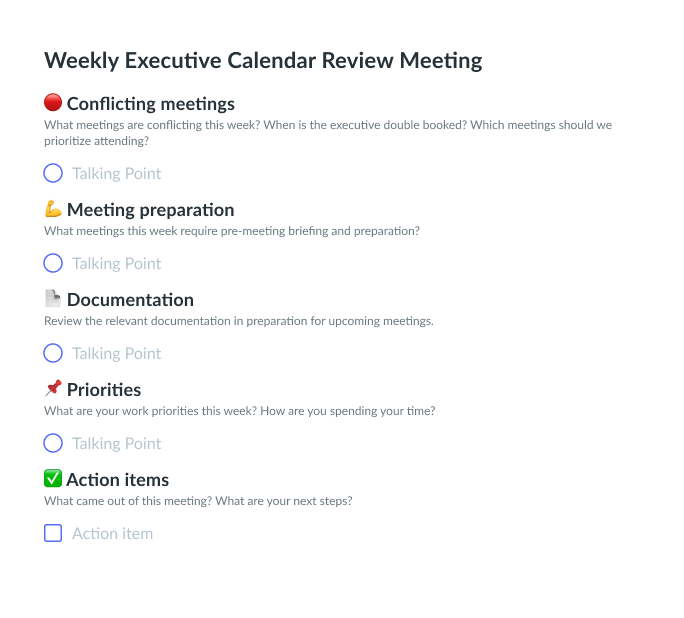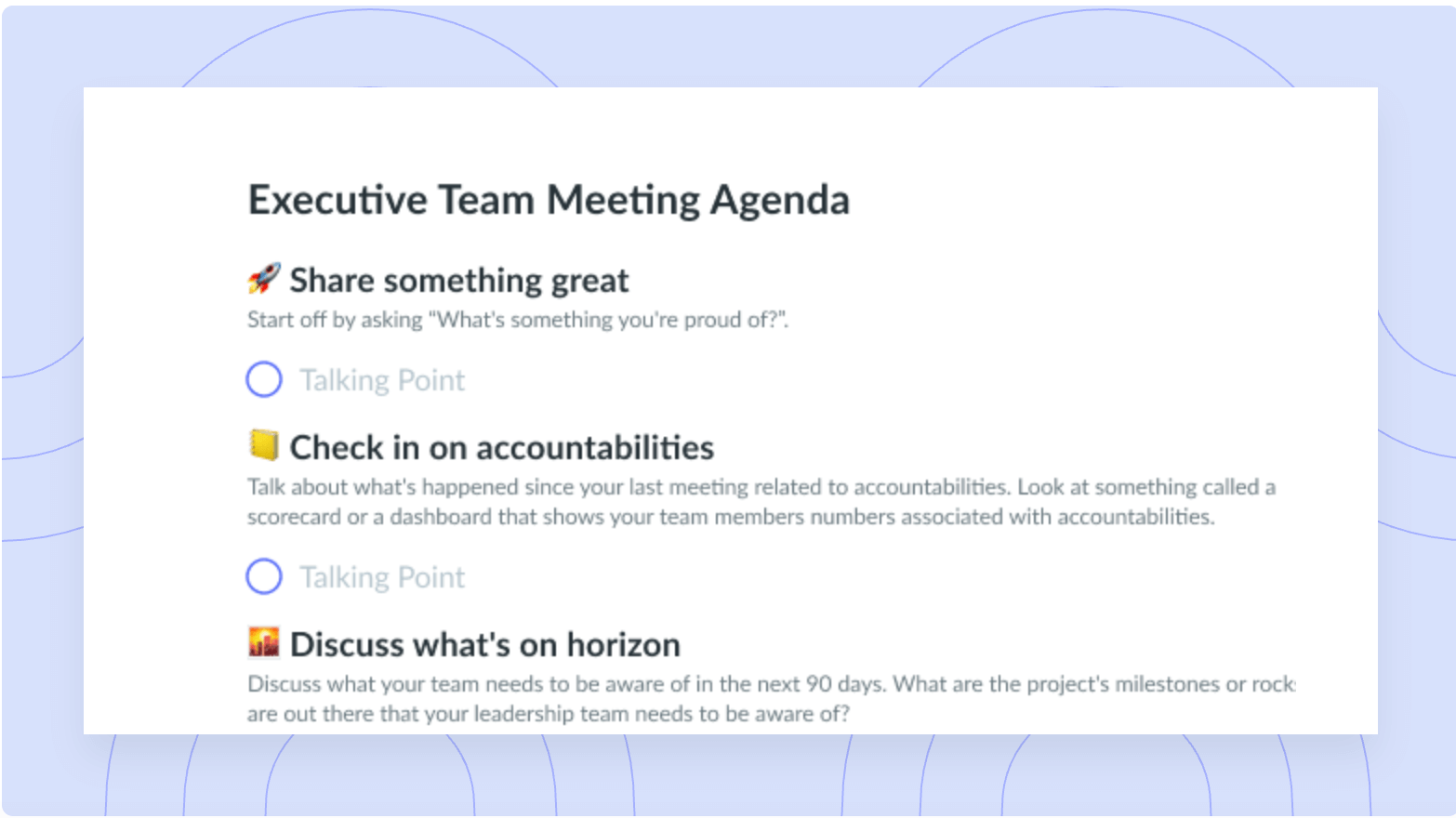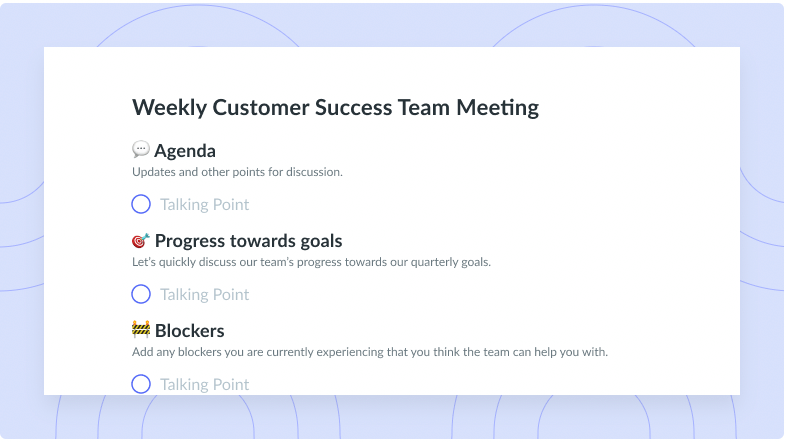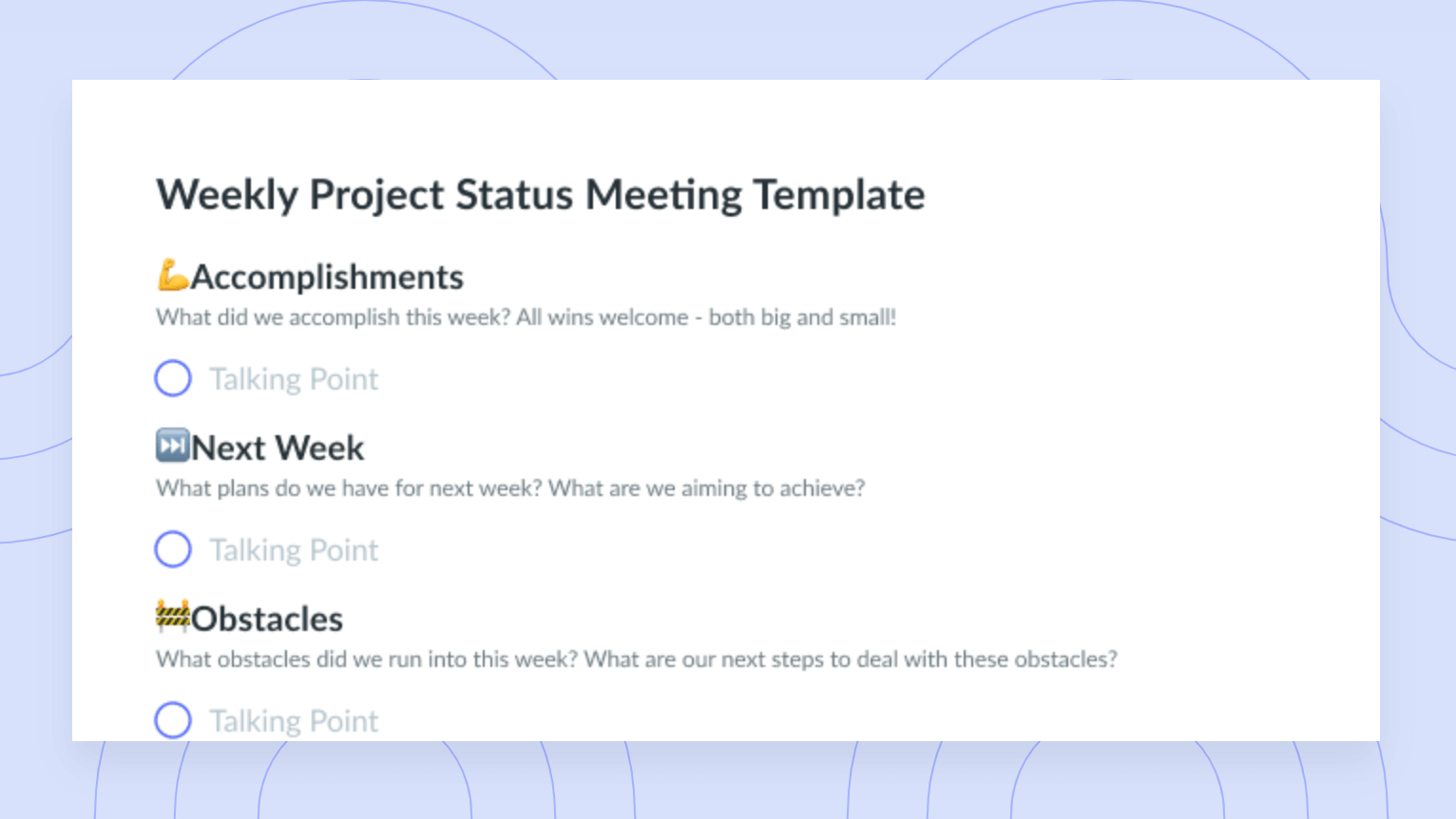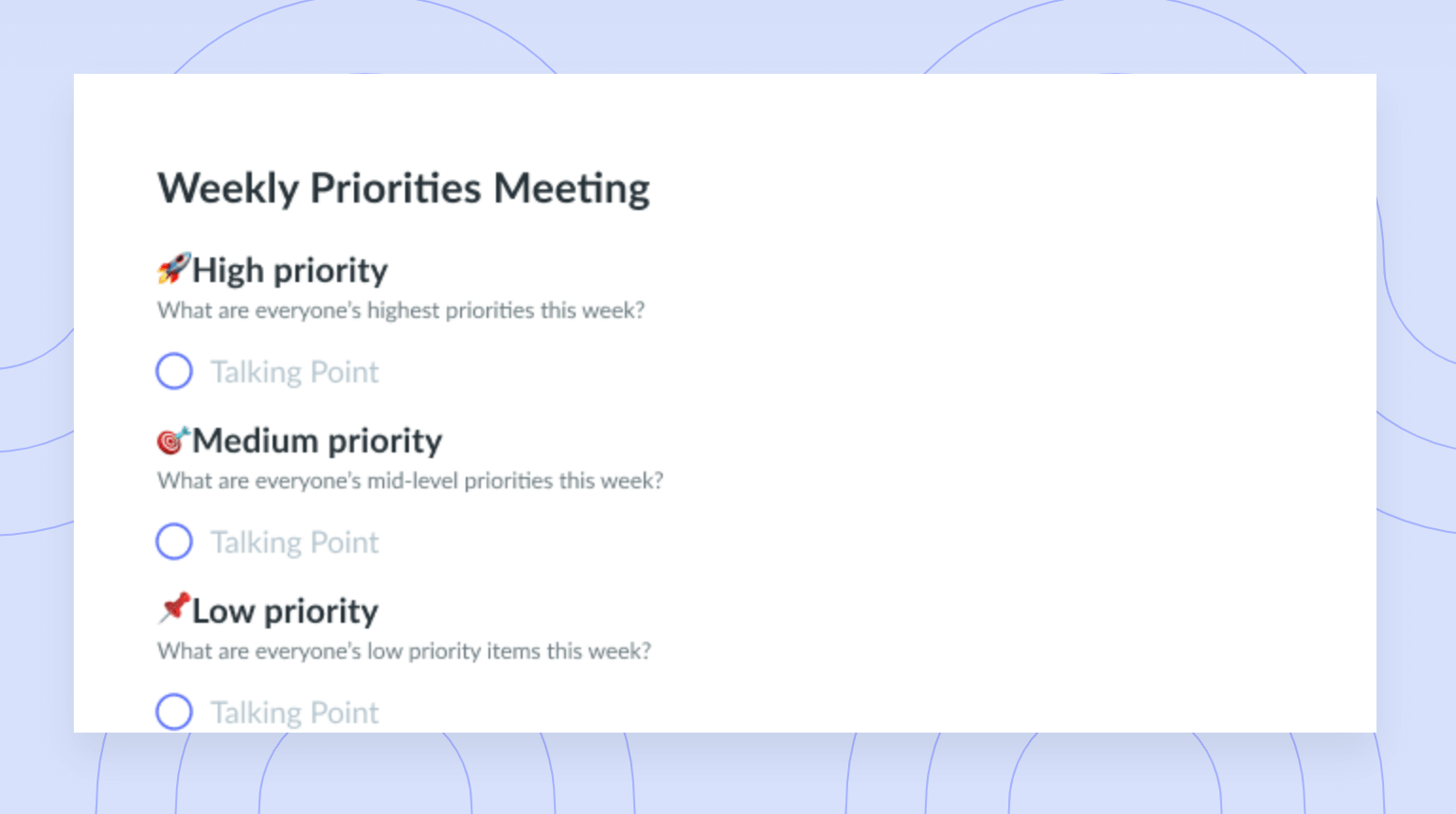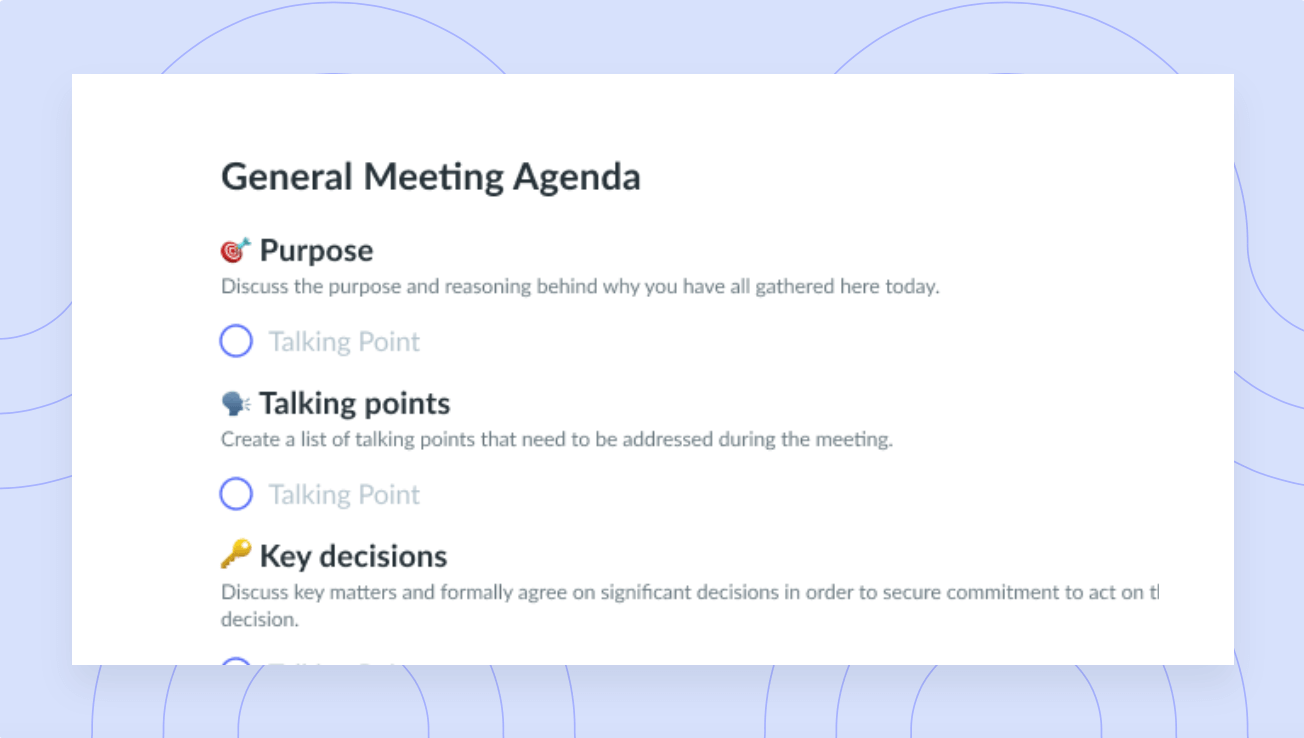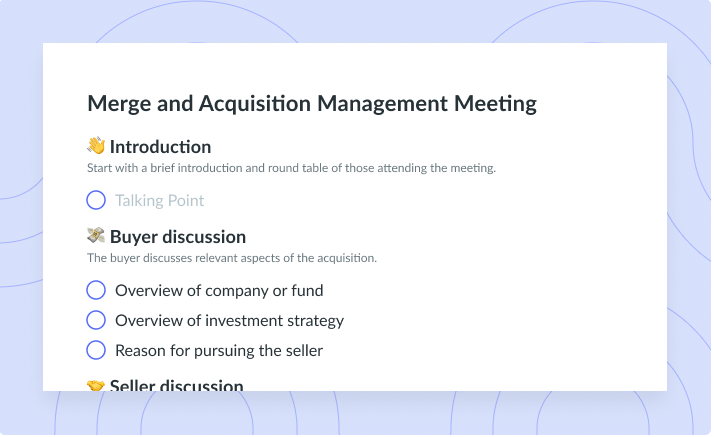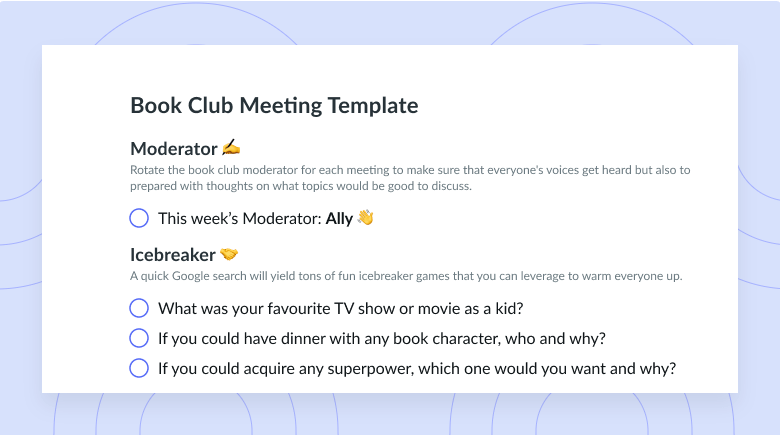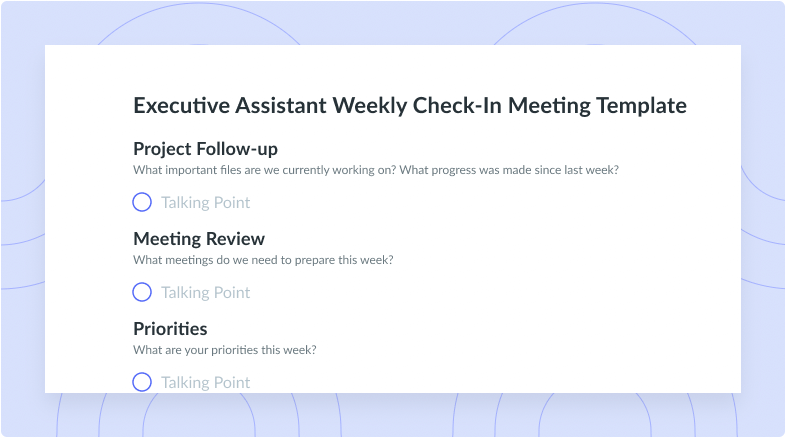
Weekly Executive Calendar Review Meeting Template
Get this templateEffective calendar management for Executive Assistants is a hugely important aspect of the role. If you're looking for a template to use, look no further.


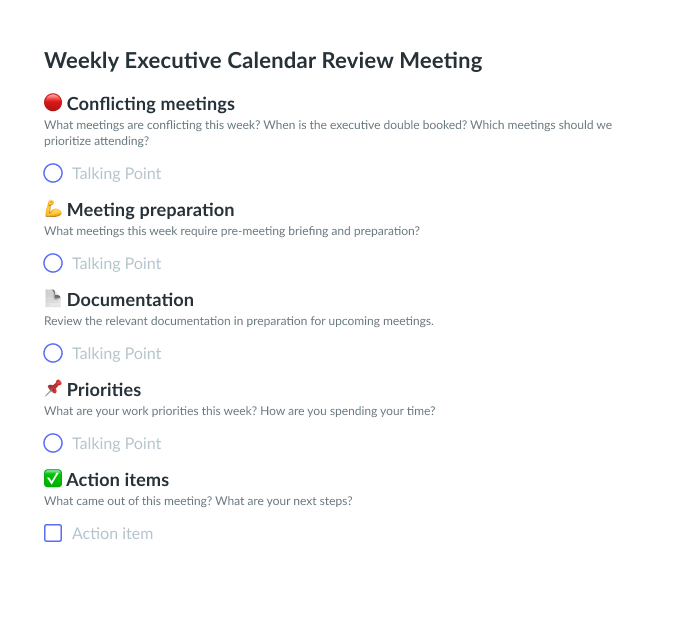

Weekly Executive Calendar Review Meeting Overview
“The best executive is one who has sense enough to pick good people to do what he wants done, and self-restraint enough to keep from meddling with them while they do it.” – Theodore Roosevelt
There are few things more challenging than managing the calendar of an executive, even if you’re the one that’s the executive! In many cases, it requires a small team of people to keep track of what the weekly schedule entails. These meetings should take place once per week, and anyone that’s on the executive schedule, or helps to keep events on track, should be present.
Executive Calendar Meetings can take place both virtually or in person, as long as everyone that has to be in attendance is there. If someone cannot be there, ensure that you have an agenda to share with them, as well as someone who took notes during the meeting that can let them (very professionally) know what they missed.
An executive calendar template is necessary to schedule all the things that compete for time and space within a calendar week. By preparing for these meetings with an agenda, it becomes easier to organize thoughts and communicate all of the necessary points. Staying on schedule, during both the meeting and through the duration of the week, is essential to ensure that things go as planned and important meetings aren’t missed.
Sticking to an executive calendar is crucial for maintaining reputation, and these weekly meetings are important to determine what events take priority and put everyone on the same page. Staying on track makes work and life much easier than it would be if you were to be consistently unorganized. These meetings are undeniably important, but this template might be just as essential.
How to Run an Effective Executive Calendar Review Meeting
Running an executive calendar meeting successfully is based heavily on preparation and prioritizing calendar management. To prepare, you’ll want to fill out a template and double-check that everyone that should be in attendance will be, and those who can’t have contacted you and you have a way set in place to provide them with what went on throughout.
You should begin the meeting by using the hierarchy of which tasks are the most important. Start with the urgent priorities that only your executive can address, and move down the list to important but not urgent, followed by urgent but not important, ending with neither urgent nor important. When you can see each task written out, it makes things less overwhelming regarding the schedule.
Provide everyone with a written copy of the meeting agenda, as well as what is happening in the week ahead. Color coding the schedule is a great option for mapping out and quickly pinpointing priorities. One of the most important components of an executive calendar meeting, other than an extreme knack for organization, is the follow-up. Never feel badly or bothersome by sending email reminders after the meeting, and even throughout the week if you deem it necessary.
Calendar management for executive assistants is made so much easier by using an executive calendar template. Make it a habit to ensure that meeting minutes are recorded so you can refer back and distribute them to those that ask.
What’s inside this Weekly Executive Calendar Review Meeting Template:
“To me, business isn’t about wearing suits or pleasing stockholders. It’s about being true to yourself, your ideas, and focusing on the essentials.” – Sir Richard Branson, CEO of Virgin Group
This template was designed to touch on the most important aspects of an executive calendar, and what should be covered in the review meeting.
1 🔴 Conflicting meetings
What meetings are conflicting this week? When is the executive double booked? Which meetings should we prioritize attending?
There are bound to be conflicting meetings that come up during a week of life as an executive. In the weekly review meeting, you can address these conflicting meetings and come up with a plan to figure out how to manage those conflicting meetings, either by sending someone in the executives’ place or rescheduling as needed.
2 💪 Meeting preparation
What meetings this week require pre-meeting briefing and preparation?
During this part of your executive review meeting, you’ll prepare for the meetings that are to take place that week. Whatever information you have regarding each scheduled meeting is fantastic for ensuring that the executive is ready to show up engaged and informed.
3 📄 Documentation
Review the relevant documentation in preparation for upcoming meetings.
Because not everyone will be able to attend every executive meeting, and because you’ll need to refer back to them at some point, you’ll want to document each meeting by assigning someone to record them, as well as taking notes. Documentation is crucial, primarily if you need to dig up information from the meeting that you can’t quite recall.
4 📌 Priorities
What are your work priorities this week? How are you spending your time?
This is a good place to use the aforementioned hierarchy of most important and urgent, to not important or urgent at all. Making a list of priorities is how the biggest problems get solved quickly, and it also puts the necessary tasks in front of everyone, in written form.
5 ✅ Action items
What came out of this meeting? What are the next steps?
Action items should take place at the end of the meeting, acting as a wrap-up that tells those present where to go from here. Whether it’s scheduling the next meeting or assigning a list of important phone calls that have to be made, action item assignments resolve the meeting and move people out into their days.

